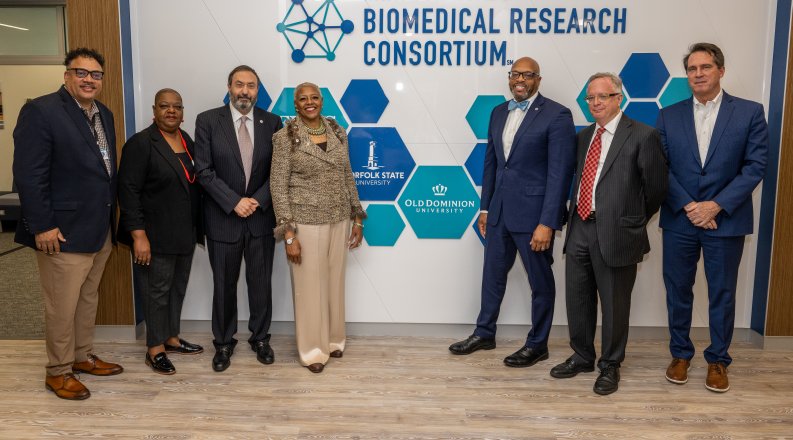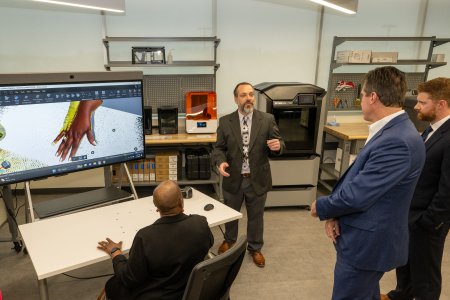Scientists, researchers, community leaders, clinicians and other professionals in the healthcare industry in Hampton Roads now have a state-of-the-art facility to collaborate on innovative projects and jump-start scientific research to address health disparities in the region.
The Hampton Roads Biomedical Research Consortium (HRBRC), a state-sponsored partnership among Old Dominion University, Eastern Virginia Medical School, Sentara Healthcare and Norfolk State University, celebrated the opening of its headquarters on April 7 at ODU Tri-cities Center in Suffolk.
HRBRC was funded by Virginia lawmakers in 2020 to advance and serve as a catalyst for emerging research and economic drivers in Hampton Roads, while also addressing the region’s significant healthcare inequity and disparities. Since its creation, the consortium has secured $10 million in government grants and has another $15 million pending.
The facility includes four unique labs – a Prototyping and Integration lab, a 5G Digital Living lab, an AI and Analytics lab and a HIPPA (Health Insurance Portability and Accountability Act) lab for medical research associated with Controlled Unclassified Information (CUI) or Personally Identifiable Information (PII) .
“I think the magic of this place is having all of those technologies and capabilities in one place all focused on the same mission,” said Patrick Ball, core facilities manager at HRBRC.
The Prototyping and Integration lab houses a digital anatomy printer that can quickly and affordably replicate the same biomechanical properties as human tissue to be used for biomedical training.
Ball demonstrated its capabilities by showing a prosthetic arm that was created in less than 24 hours and cost less than $500 to make. He said a similar prosthetic could cost tens of thousands of dollars and take much longer to make.
“We hope that by driving innovation like this, we can drive down the cost, which will increase accessibility and start to address some of the health disparities in Hampton Roads,” Ball said.
The facility is also not limited to just ODU, EVMS, Norfolk State and Sentara. Any researchers, medical practitioners or public health professionals in the region can apply for use of the space through the HRBRC website.
"The Hampton Roads Biomedical Research Consortium has been working on putting together a research space where we can bring collaborators, from universities, from the healthcare systems, and really also from the community to work on population health," said Morris Foster, ODU's vice president for research. “We can help people create the technologies that ultimately become products for medical purposes, for prevention of disease, for all those things. We also hope to inspire a bio-health economy for the region."




